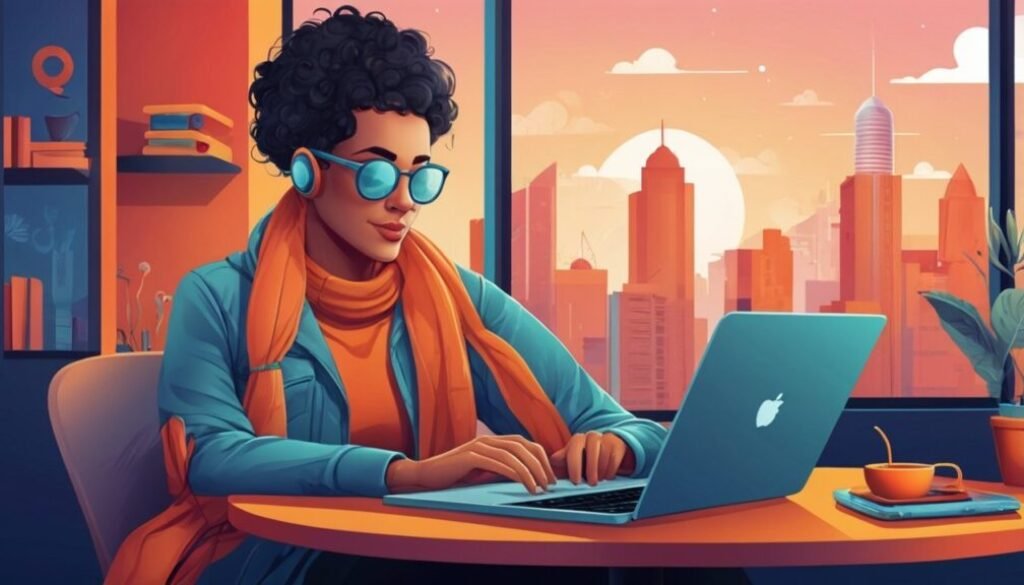Social Media Design: Best Tools & Trends 2025
Have you ever wondered why some brands instantly grab your attention on Instagram or LinkedIn, while others fade into the background? The answer often lies in social media design—the art of combining visuals, colors, and layouts to make content both eye-catching and memorable. Far beyond aesthetics, social media design plays a critical role in shaping brand identity, improving engagement, and driving digital growth.
In today’s fast-paced online world, your audience scrolls through hundreds of social media posts every day. Strong design ensures that your message doesn’t just get seen—it gets remembered. Whether you’re a small business owner, a marketer, or a creative professional, understanding the principles of effective graphic design for social platforms can be the difference between content that gets ignored and content that sparks conversation.
This article will explore practical tips, essential tools, and the latest trends in social media design, giving you the strategies you need to create visuals that resonate. Let’s dive into how you can elevate your brand with designs that inspire clicks, shares, and real connections.
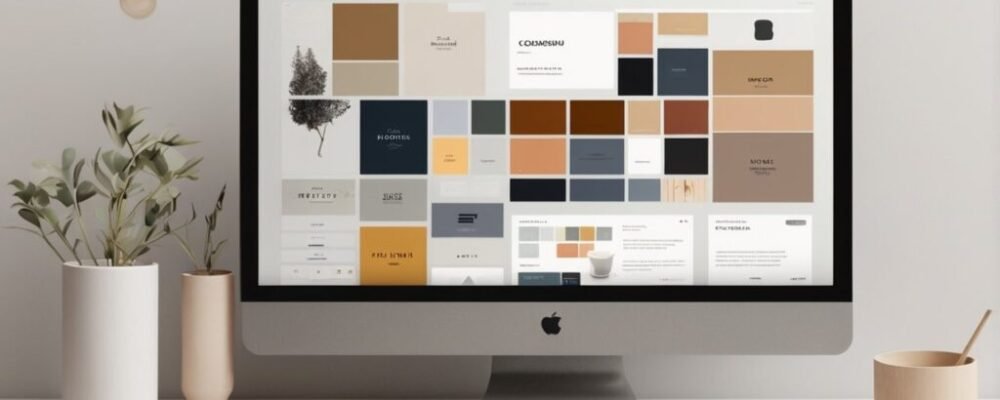
Chapter 1: What Is Social Media Design and Why It Matters
Understanding Social Media Design in Today’s Digital World
Scroll through your favorite platform—Instagram, LinkedIn, or TikTok—and ask yourself: why do some posts grab your attention instantly while others feel invisible? The secret often lies in social media design. At its core, social media design is the strategic use of colors, fonts, layouts, and visuals to make your content stand out. It’s not just about making things look pretty; it’s about creating consistency and identity that audiences recognize and trust.
According to Statista, over 4.9 billion people worldwide now use social media, and the average user spends more than two hours daily on these platforms. That means your content competes with millions of posts. Good design ensures your brand doesn’t just blend in—it sparks recognition and interaction.
Why Social Media Design Matters for Brands
Building a Strong Brand Identity
A brand is more than a logo. It’s the feelings and perceptions that people associate with you. Harvard Business Review emphasizes that consistent brand presentation can increase revenue by up to 23%. When your social media posts align visually—using the same color palette, typography, and graphic style—you reinforce recognition and trust.
For example, imagine a startup using inconsistent graphics across Facebook and Instagram. Users might not even realize it’s the same company. Contrast this with brands like Nike or Starbucks—whose design identity is instantly recognizable. That’s the power of deliberate social media design.
👉 Want to understand visual identity better? Check out What Is a Brand Style Guide: Everything You Need to Know for deeper insights.
Driving Engagement Through Visuals
Studies show that visual content is 40 times more likely to be shared than text alone. A thoughtfully designed social post doesn’t just look appealing; it also increases likes, shares, and comments.
Take the case of Sarah, a freelance fitness coach who struggled to gain traction online. Her early posts were plain text updates. After she started investing in professional graphic design templates and infographics, her engagement tripled within three months. Clients began to message her saying they discovered her because her posts “looked professional and trustworthy.”
If you don’t have in-house design skills, hiring freelancers can be the best solution. Platforms like Fiverr make it easy to find vetted designers who specialize in social media post design.
👉 Check out the best solution on Fiverr →
Freelancers vs. Agencies: Which Approach Works Best?
When building your social media design strategy, you’ll often face the decision of hiring a freelancer or working with a creative agency.
-
Freelancers: Flexible, affordable, and easy to hire for one-off projects. Ideal if you’re a small business or solopreneur. You can browse reviews, pricing, and portfolios instantly.
👉 See pricing and reviews directly on Fiverr. -
Agencies: Offer comprehensive services including branding, campaigns, and analytics. However, they are more expensive and less flexible for short-term needs.
For most growing brands, freelancers provide an affordable service without sacrificing quality. Many small businesses have scaled faster by outsourcing to talented freelancers who specialize in niche designs such as Pinterest pins or TikTok videos.
👉 Discover this affordable service and get started today.
Practical Takeaways for Your Social Media Design
Here are a few strategies you can implement right away:
-
Create a style guide that outlines your fonts, colors, and visual rules.
-
Use templates for consistency across posts, but customize enough to stay authentic.
-
Test engagement by comparing different designs—bold typography vs. minimalist layouts.
-
Outsource wisely—freelancers can deliver professional results at a fraction of agency costs.
If you’re unsure how to brief a designer, read Top FAQs for Hiring a WordPress Website Designer on Fiverr—many of the same principles apply when hiring for social media projects.
Why This Chapter Matters
Your brand’s success on social platforms doesn’t depend solely on posting frequency. It depends on whether your audience recognizes, connects with, and engages with your content. Effective social media design provides that connection. It transforms casual scrollers into followers—and eventually into customers.
As we continue through this guide, you’ll learn not just what makes a design appealing, but how to apply trends, tools, and strategies to elevate your digital presence in 2025 and beyond.

Chapter 2: Key Elements of Effective Social Media Design
Why the Right Design Elements Shape Your Social Media Success
Strong social media design doesn’t happen by accident. Every color, font, and layout choice plays a role in shaping how people perceive your brand online. HubSpot research shows that consistent visuals across platforms can increase audience recognition by up to 80%. When users scroll through Instagram or LinkedIn, your design should act like a digital fingerprint—instantly identifiable and memorable.
But what exactly makes a social media post stand out? Let’s explore the key design elements that can elevate your content from average to engaging.
Choosing the Right Color Palette for Social Media Graphics
Color is often the first thing people notice. A cohesive palette creates harmony across your social media posts and strengthens brand recognition.
-
Warm tones (red, orange, yellow) can energize and grab attention.
-
Cool tones (blue, green) convey trust and calmness.
-
Neutral tones (black, white, gray) provide balance and sophistication.
For example, Coca-Cola consistently uses bold red to spark energy, while LinkedIn’s signature blue reflects professionalism.
👉 If you don’t know where to start, many freelancers specialize in brand color strategy. Discover this affordable service and get started today.
Fonts and Typography That Stand Out
Typography communicates personality. A playful handwritten font feels different from a sleek sans-serif. In social media graphic design, typography should be:
-
Legible on mobile devices (over 80% of social media traffic is mobile, Statista reports).
-
Consistent with your overall brand style.
-
Limited to two or three font families to avoid clutter.
For instance, a wellness coach might pair a calming serif with modern sans-serif subheadings. Meanwhile, a tech startup might stick to clean, geometric fonts.
👉 Need font pairings designed for you? Check out the best solution on Fiverr →
Balancing Text and Visuals in Social Media Post Design
One of the biggest mistakes beginners make is overloading images with too much text. Facebook’s own research suggests that posts with lighter text overlay often perform better. The key is to:
-
Keep text short and punchy.
-
Use visuals (icons, graphics, product shots) to tell most of the story.
-
Maintain breathing space with clean layouts.
Example: A bakery promoting new cupcakes might post a high-quality product photo with the words “Fresh Today” rather than filling the graphic with paragraphs.
👉 For design inspiration, explore Logo Ideas: 25 Creative Designs to Inspire Your Brand in 2025.
Platform-Specific Guidelines for Social Media Designs
Each platform has unique requirements for image size and layout. Ignoring these can make your posts look unprofessional.
-
Instagram: 1080×1080 (square) or 1080×1920 (stories).
-
Facebook: 1200×628 for shared images.
-
LinkedIn: 1200×627 for posts.
-
TikTok: 1080×1920 for vertical videos.
A brand that looks polished on one platform but distorted on another risks losing credibility. That’s why many businesses turn to freelance designers who specialize in platform optimization.
👉 See pricing and reviews directly on Fiverr.
Why Templates and Consistency Matter
Templates help ensure brand consistency. They save time while keeping your social media design strategy cohesive. However, the trick is to adapt them—too much repetition feels robotic.
A growing e-commerce brand, for example, might use the same template for product announcements but change background colors seasonally. This balance keeps posts familiar yet fresh.
👉 Want to try DIY templates? Canva and Adobe Express are great starting points. But if you need custom branded templates, hire Fiverr experts to create something unique.
DIY vs. Hiring a Professional: Which Is Best?
Should you design posts yourself or hire help? Here’s a quick comparison:
-
DIY: Tools like Canva allow you to create simple posts quickly. Great for beginners or low-budget projects.
-
Professional freelancer: Brings advanced skills, branding expertise, and tailored design. Better for long-term growth.
A small clothing brand may start DIY but later realize their engagement plateaus. By outsourcing to a freelancer, they refresh their designs, improve click-through rates, and boost sales.
👉 Check out the best solution on Fiverr →
Key Takeaways for Effective Social Media Design
-
Colors, fonts, and layouts shape brand identity.
-
Consistency builds recognition and trust.
-
Platform guidelines should never be ignored.
-
Templates save time, but customization is crucial.
-
Freelancers provide affordable, high-quality solutions for growing brands.
For further design inspiration, see our guide on Pinterest Pin Design: Crafting Click-Worthy Pins That Drive Traffic.
Why These Elements Matter
The success of your brand’s social media design doesn’t depend solely on posting frequency. Instead, it’s the deliberate use of design elements—colors, typography, and layouts—that capture attention and build long-term relationships. By mastering these fundamentals, you create visuals that not only attract clicks but also foster brand loyalty.
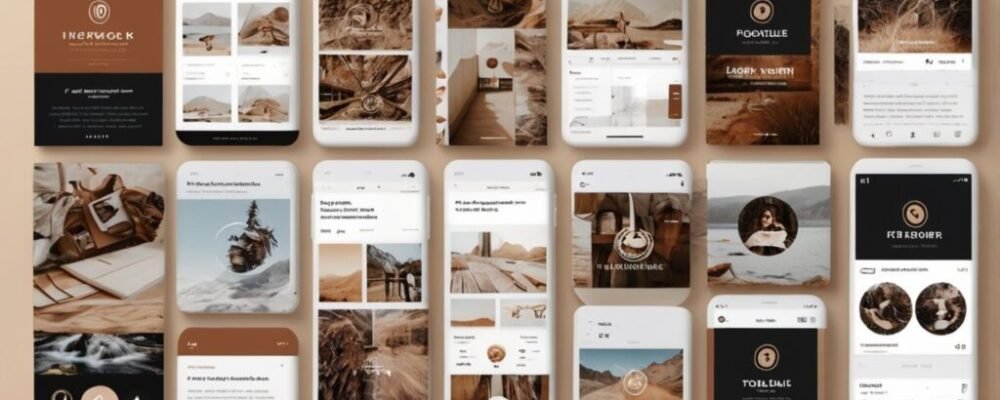
Chapter 3: Best Tools for Social Media Graphic Design
Why the Right Tools Are Essential for Social Media Design
A stunning visual doesn’t just happen—it’s the result of the right tools combined with creativity. Whether you’re an entrepreneur, marketer, or freelancer, having access to reliable software makes your social media design faster, more professional, and more effective. According to HubSpot, posts that include well-designed visuals see 650% higher engagement compared to text-only updates. That makes choosing the right tool a strategic decision, not just a technical one.
Let’s break down the best tools—free, premium, and professional—and explore how they can transform your social media graphics.
Free Tools for Beginners in Social Media Post Design
Canva: The All-in-One DIY Solution
When people think of easy design, Canva often comes to mind. With drag-and-drop features, thousands of templates, and platform-specific sizes, Canva is perfect for beginners.
-
Pros: Free version available, customizable templates, user-friendly.
-
Cons: Limited advanced editing, templates can look generic if overused.
👉 Don’t have time to customize templates? Discover this affordable service and get started today.
Adobe Express: Quick and Stylish
Adobe Express (formerly Spark) offers sleek templates and automatic resizing for platforms like Instagram or TikTok. It’s a good option for quick social media post design.
-
Pros: Integration with Adobe Stock, strong typography.
-
Cons: Not as flexible as full Adobe Creative Cloud tools.
Professional Design Software for Advanced Social Media Graphics
Adobe Photoshop and Illustrator
If you want full creative control, nothing beats Photoshop and Illustrator. These tools are industry standards for graphic design professionals.
-
Pros: Powerful editing, detailed customization, endless creative options.
-
Cons: Steeper learning curve, subscription cost.
Many freelancers on Fiverr use Photoshop and Illustrator to deliver high-quality posts, logos, and brand kits.
👉 Check out the best solution on Fiverr →
Figma: Collaborative Social Media Design
Figma is popular among teams who collaborate on designs. Its cloud-based platform allows real-time editing, making it excellent for agencies or distributed teams.
-
Pros: Free version available, collaboration features.
-
Cons: Requires consistent internet, fewer offline options.
Niche Tools for Creative Social Media Designs
-
Crello (VistaCreate): Similar to Canva but with more animation options.
-
Piktochart: Great for infographic-based social media posts.
-
Snappa: Simple tool with pre-sized templates.
If you’re a content creator, these tools can help you stand out with fresh visuals while saving time.
DIY Tools vs. Freelancers: Which Is Right for You?
The big question: Should you stick to DIY platforms like Canva or invest in professional freelancers?
-
DIY Tools: Great for quick posts, startups, or anyone testing ideas on a budget. But the risk is that your brand may look like everyone else’s.
-
Freelancers: Deliver tailored, unique, and high-quality designs. Perfect for businesses ready to scale or those who want a polished brand identity.
Example: A small restaurant used Canva templates for months but struggled to attract attention. After hiring a Fiverr freelancer to design custom branded graphics, their Instagram engagement doubled within 8 weeks.
👉 See pricing and reviews directly on Fiverr.
How to Choose the Best Tool for Your Social Media Design
Here’s a quick framework:
-
Budget-conscious beginners → Canva or Adobe Express.
-
Businesses needing custom designs → Freelancers on Fiverr.
-
Creative professionals → Photoshop, Illustrator, or Figma.
For inspiration, check out Create Your Own AI Avatar: Best Tools, Tips, and Top Fiverr Designers for 2025—AI tools are increasingly complementing traditional design workflows.
Key Takeaways on Social Media Design Tools
-
Canva and Adobe Express work best for DIY beginners.
-
Photoshop, Illustrator, and Figma are ideal for professionals.
-
Niche tools like Crello or Piktochart add variety and creativity.
-
Freelancers provide unique, affordable solutions when DIY templates fall short.
👉 Discover this affordable service and get started today.
Why Tools and Freelancers Work Best Together
The smartest brands don’t choose between tools and freelancers—they combine them. Use Canva or Figma for quick content, but hire professionals for campaigns, ads, and branding. This hybrid approach ensures efficiency without compromising quality.
With the right tools and the right people, your social media design will not only attract clicks—it will build long-term connections with your audience.
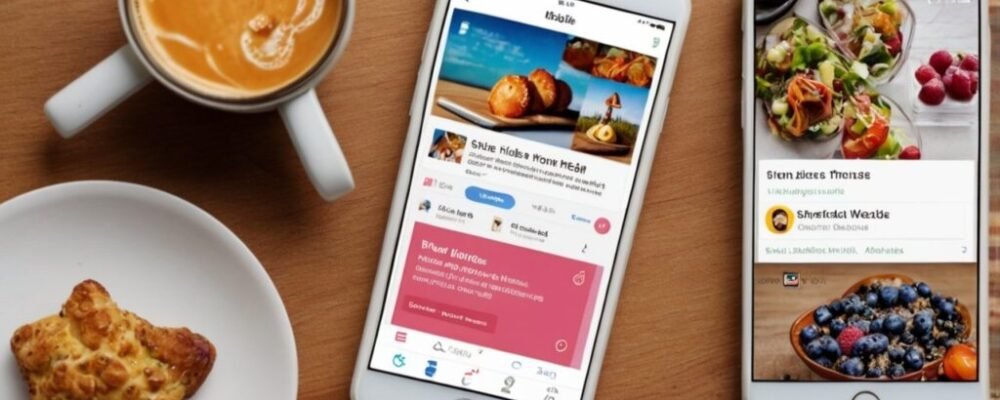
Chapter 4: Social Media Post Design Best Practices
Why Social Media Post Design Matters for Engagement
Every day, billions of people scroll through feeds packed with videos, photos, and ads. So how do you make sure your brand’s message cuts through the noise? The answer lies in social media design best practices. A great design isn’t just attractive—it’s functional. It ensures your content is optimized for visibility, readability, and interaction.
According to Hootsuite, posts with strong visuals can generate up to 94% more views compared to text-only updates. That means mastering social media post design is one of the most effective ways to boost engagement and conversions.
Optimizing Social Media Post Design by Platform
Each social media platform has unique requirements. Designing with these in mind ensures your posts look professional and perform well.
Instagram Post Design Best Practices
-
Stick to 1080x1080px (square) or 1080x1920px (stories).
-
Use bold visuals and minimal text.
-
Add consistent filters to strengthen your brand identity.
Example: A fashion boutique using the same pastel filter across posts creates a cohesive “look” that followers recognize instantly.
👉 Want professional Instagram templates customized for your brand? Check out the best solution on Fiverr →
Facebook Post Design Best Practices
-
Recommended size: 1200x628px.
-
Focus on clarity—less text, more visuals.
-
Test carousel posts and infographics for higher engagement.
LinkedIn Post Design Best Practices
-
Recommended size: 1200x627px.
-
Prioritize professional, clean layouts with easy-to-read typography.
-
Use branded graphics for thought-leadership posts.
👉 For business-focused design help, see pricing and reviews directly on Fiverr.
TikTok and Short-Form Video Posts
-
Use 1080x1920px (vertical format).
-
Keep captions minimal—visual storytelling is key.
-
Add on-brand text overlays to guide viewers.
Balancing Consistency and Creativity in Social Media Design
Consistency builds trust, but creativity keeps your audience interested. The challenge is balancing both.
-
Consistency: Use the same fonts, colors, and logo placement.
-
Creativity: Experiment with new layouts, seasonal themes, or motion graphics.
For instance, Starbucks maintains consistent branding but launches seasonal designs (pumpkin spice, holiday cups) to keep content fresh.
👉 Need unique seasonal graphics? Discover this affordable service and get started today.
Mobile-First Design: Why It’s Non-Negotiable
With over 80% of social media users accessing platforms via mobile (Statista, 2024), your designs must look good on small screens.
Tips for mobile-friendly social media post design:
-
Use large, readable fonts.
-
Keep important elements centered.
-
Avoid clutter—leave space around text and visuals.
Example: A restaurant promoting new menu items should keep text minimal (“New Tacos 🌮”) with a bold image, ensuring readability on phones.
Storytelling Through Social Media Designs
Design isn’t just visual decoration—it’s a form of storytelling. Each post should reflect your brand’s message and values.
-
Use visuals to tell a story: Before/after transformations, behind-the-scenes snapshots, or customer testimonials.
-
Incorporate branded icons: These small touches add identity and coherence.
-
Leverage carousels: Multi-image posts can walk the audience through a narrative.
👉 For inspiration, check out What Content Should You Put on a Website: Key Tips & Best Practices. Many of the same storytelling principles apply to social posts.
DIY vs. Hiring Designers: The Smart Approach
Not every business owner has time (or talent) to design social media posts daily. That’s where freelancers become invaluable.
-
DIY Tools: Canva, Adobe Express, and Crello are good for simple designs.
-
Freelancers: Offer tailored templates, consistent branding, and polished visuals that stand out.
A small coaching business, for example, may start with DIY tools but soon find posts blending into the crowd. After hiring a Fiverr freelancer, they gain unique branded templates that elevate their professional image.
👉 Check out the best solution on Fiverr →
Key Takeaways for Social Media Post Design
-
Follow platform-specific size guidelines.
-
Balance consistency with fresh creative twists.
-
Always design mobile-first for maximum impact.
-
Use storytelling to connect emotionally with your audience.
-
Consider freelancers for custom, brand-aligned designs.
For more creative design inspiration, read Pinterest Pin Design: Crafting Click-Worthy Pins That Drive Traffic.
Why These Best Practices Matter
Good social media design isn’t about adding random graphics—it’s about intentional, strategic choices that increase visibility and engagement. By following platform guidelines, keeping posts mobile-friendly, and blending consistency with creativity, you set your brand up for success. And with the help of professional freelancers when needed, your designs can truly shine in an overcrowded digital landscape.
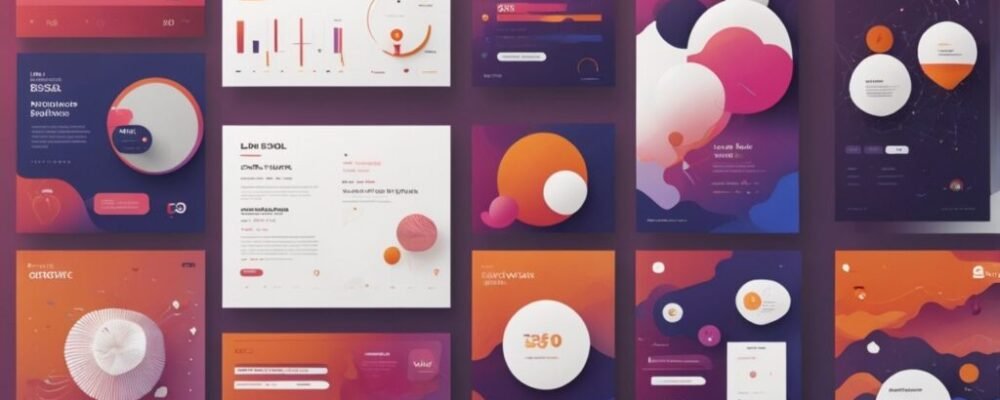
Chapter 5: Social Media Design Trends for 2025
Why Social Media Design Trends Matter
The world of social media design evolves at lightning speed. What worked in 2022 may already feel outdated in 2025. Brands that adapt to design trends capture attention, while those that resist risk looking irrelevant. Deloitte’s Digital Media Outlook highlights that consumers are 57% more likely to engage with fresh, innovative visuals than with recycled formats.
If your brand wants to stay ahead, keeping an eye on social media design trends is critical. Let’s explore what’s shaping 2025 and how you can apply these trends today.
Minimalist Layouts: Less Is More
Minimalism is no longer just an aesthetic—it’s a strategy. Clean, uncluttered designs emphasize your core message and create breathing room in oversaturated feeds.
-
Flat backgrounds with bold focus elements.
-
Whitespace that draws attention to headlines or CTAs.
-
Monochrome palettes paired with one accent color.
Example: Tech startups using sleek minimalist layouts on LinkedIn see higher engagement because the message is clear and direct.
👉 Want custom minimalist templates? Check out the best solution on Fiverr →
Bold Typography and Text-Driven Visuals
With users scrolling quickly, bold typography grabs attention faster than detailed images. In 2025, brands are leaning into:
-
Oversized fonts as central design elements.
-
Contrasting colors to highlight keywords.
-
Motion typography (animated text overlays on short videos).
Statista reports that short-form video ads with bold text overlays are 2x more likely to hold viewers’ attention than those without.
👉 See pricing and reviews directly on Fiverr.
AI-Generated Visuals: The Next Wave of Social Media Design
Artificial intelligence is reshaping design workflows. Tools like MidJourney, Leonardo.ai, and DALL·E enable brands to create unique graphics instantly. In 2025, AI-generated visuals are moving mainstream, offering:
-
Faster content creation without relying solely on stock photos.
-
Personalized images aligned with brand identity.
-
Cost savings for startups with limited design budgets.
But while AI can speed up production, brands still need human designers to ensure quality and brand alignment. That’s why many businesses combine AI tools with freelancers.
👉 Discover this affordable service and get started today.
For a deeper dive, check out 2025 AI Tools: Next-Gen Platforms & Trends Guide.
Motion Graphics and Micro-Animations
Static images are no longer enough. Motion design—short animations, GIFs, and cinemagraphs—is trending because it captures attention in crowded feeds.
-
Micro-animations highlight product features.
-
Looping GIFs create engaging stories.
-
Interactive visuals like polls or animated infographics.
Hootsuite reports that posts with motion graphics increase engagement by 25% on average compared to static images.
👉 Need help creating motion graphics? Check out the best solution on Fiverr →
Immersive Social Media Post Design with AR & VR
As platforms integrate augmented reality (AR) filters and VR experiences, social media design is becoming more immersive.
-
AR filters allow customers to “try on” products virtually.
-
VR storytelling creates branded experiences inside platforms like Meta’s Horizon Worlds.
-
Interactive posts make engagement feel like play.
Brands in fashion, beauty, and retail are already leveraging AR for product launches. By 2025, this is expected to expand across industries.
Balancing Trend Adoption with Brand Consistency
Not every trend fits every brand. The key is balance—adopt what aligns with your identity while staying consistent.
-
A finance company may lean on minimalism and typography.
-
A fashion brand may embrace AR filters and bold visuals.
-
A wellness coach may combine clean layouts with calming colors.
Consistency ensures your brand stays recognizable even as you experiment with new styles.
👉 For guidance on keeping your visuals consistent, read What Is a Brand Style Guide: Everything You Need to Know.
Key Takeaways: Future-Proofing Your Social Media Design
-
Minimalist layouts cut through clutter.
-
Bold typography grabs attention quickly.
-
AI-generated visuals speed up content creation.
-
Motion graphics and AR experiences boost engagement.
-
Trend adoption should never override brand consistency.
In short, social media design in 2025 is about blending simplicity with innovation. By strategically adopting trends, you’ll not only stay relevant—you’ll stand out.
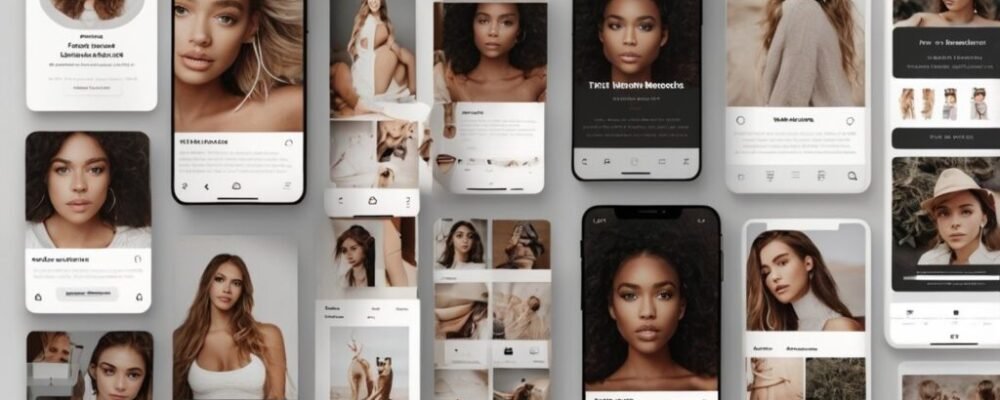
Chapter 6: How to Design a Social Media Strategy That Works
Why Social Media Design Needs a Strategy
A great visual may grab attention, but without strategy, it doesn’t move your audience toward action. Social media design isn’t just about creating pretty posts; it’s about aligning visuals with your marketing goals. According to Sprout Social, 70% of consumers say it’s important for brands to have consistent branding across all platforms. That means your design must be purposeful, not random.
In this chapter, we’ll explore how to build a social media strategy that combines creativity with business outcomes.
Step 1: Define Goals Before Designing
Every design should serve a purpose. Are you trying to:
-
Increase brand awareness? (Focus on recognizable colors, fonts, and logos.)
-
Drive engagement? (Use interactive designs like polls, carousels, or motion graphics.)
-
Generate sales or leads? (Incorporate product visuals, CTAs, and testimonials.)
Example: A fitness coach aiming for engagement might post motivational quotes with bold typography, while an e-commerce brand may prioritize product-centric posts.
👉 If you’re unsure how to align design with goals, check out the best solution on Fiverr → and consult a freelance designer for strategic templates.
Step 2: Create a Consistent Visual Identity
Consistency builds trust. Harvard Business Review reports that consistent brand presentation can boost revenue by up to 23%. Your social media design strategy should include:
-
A brand style guide for fonts, colors, and logo placement.
-
Template sets for different content types (quotes, product promos, infographics).
-
Platform-specific adaptations without losing identity.
👉 Learn more in What Is a Brand Style Guide: Everything You Need to Know.
Step 3: Match Design to Audience Preferences
Your audience’s tastes should guide your visuals. A B2B LinkedIn audience may prefer clean, professional graphic design, while a Gen Z TikTok audience expects vibrant colors, memes, and interactive filters.
-
Research demographics: Use insights tools on Instagram, Facebook, or LinkedIn.
-
Test designs: Compare engagement on minimalism vs. bold typography.
-
Adapt quickly: Pivot toward designs that earn better results.
👉 Want quick audience-driven design experiments? See pricing and reviews directly on Fiverr.
Step 4: Balance Content Types in Social Media Design
A winning social media design strategy blends variety with consistency. Mix up your formats to keep the feed engaging:
-
Static posts: Great for quotes, announcements, and promotions.
-
Carousels: Ideal for storytelling and tutorials.
-
Reels/TikTok videos: Capture attention with fast-moving design elements.
-
Infographics: Perfect for B2B brands to explain complex ideas simply.
Example: A startup SaaS company may alternate between polished infographics on LinkedIn and playful reels on Instagram to reach different segments.
👉 Need professional infographics? Discover this affordable service and get started today.
Step 5: Measure and Adjust Your Social Media Design Strategy
What works today may not work tomorrow. That’s why tracking and adjusting are essential.
Key metrics to track:
-
Engagement rate (likes, shares, comments).
-
Click-through rate (CTR) on posts with CTAs.
-
Conversions (sign-ups, purchases).
Tools like HubSpot or Hootsuite Analytics help you measure impact. If you notice carousel posts outperforming static graphics, shift your design resources accordingly.
👉 For more growth insights, read Ultimate SEO Guide 2025: Beginner to Pro Tips for High Traffic.
Freelancer vs. DIY Strategy Execution
Should you handle all your designs in-house or outsource?
-
DIY Tools (like Canva, Figma, Adobe Express): Great for startups or solopreneurs who need fast, budget-friendly visuals.
-
Freelancers: Provide expertise, trend knowledge, and polished design aligned with strategy.
A boutique skincare brand once DIYed their posts but struggled with brand consistency. After hiring a Fiverr freelancer for template packages, their engagement rose 45% in three months because the visuals matched their brand’s premium feel.
👉 Check out the best solution on Fiverr →
Key Takeaways for Social Media Strategy Design
-
Start with clear goals for each design.
-
Maintain visual consistency across platforms.
-
Match visuals to audience preferences.
-
Use a mix of static, carousel, and video designs.
-
Track results and adjust regularly.
-
Consider freelancers for scalable, professional-quality support.
Your social media design strategy isn’t just a creative exercise—it’s a business tool. With clear goals, consistent branding, and professional execution, you can turn designs into measurable results.
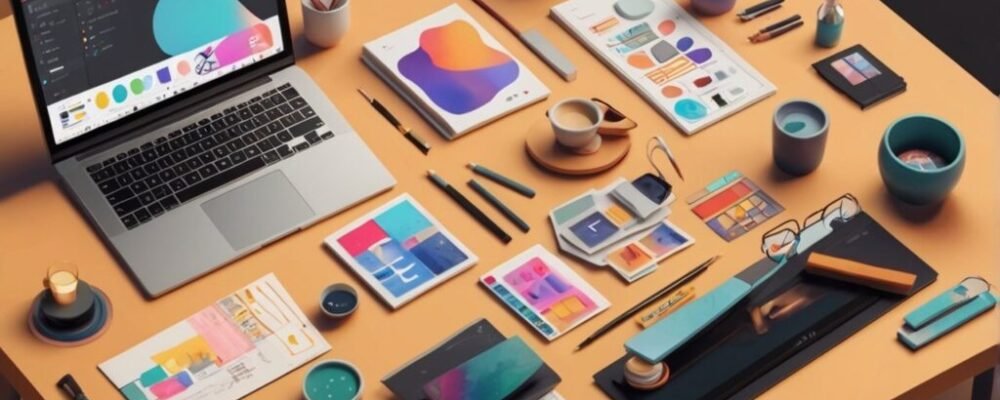
Conclusion: Elevate Your Brand With Social Media Design
In today’s digital landscape, social media design is more than an afterthought—it’s the foundation of how your brand is seen, remembered, and trusted online. From the fundamentals of color palettes and typography to the cutting-edge trends of AI visuals and AR experiences, design choices directly influence whether your audience scrolls past or stops to engage.
Across this guide, we explored:
-
Why social media design matters: It builds brand identity and drives engagement.
-
Key design elements: Colors, fonts, and layouts that communicate your story.
-
The best tools: From Canva to Photoshop to Figma, plus niche design platforms.
-
Best practices for posts: Platform-specific optimization, mobile-first design, and storytelling.
-
Trends for 2025: Minimalism, bold typography, AI visuals, and motion graphics.
-
Strategy integration: Aligning design with business goals for measurable ROI.
The common thread? Successful brands don’t treat design as decoration—they treat it as strategy. Harvard Business Review has shown that consistent branding across channels can increase revenue by up to 23%, and Statista highlights how visual-first posts generate far higher engagement.
But while the principles are clear, execution can be challenging. Not every business has in-house design teams or the time to learn advanced software. That’s where freelancers step in. With platforms like Fiverr, you can find talented designers who understand branding, platform guidelines, and design trends—without the high cost of agencies.
👉 Check out the best solution on Fiverr →
👉 See pricing and reviews directly on Fiverr.
👉 Discover this affordable service and get started today.
The truth is, your brand’s future online will be shaped by the visuals you put out today. A polished, consistent, and trend-aware social media design strategy is no longer optional—it’s essential.
So as you plan your next campaign, ask yourself: are your designs helping you stand out—or blending into the noise? If it’s the latter, it’s time to act. Combine the tools, strategies, and professional support shared in this guide, and watch your content transform into a brand-building powerhouse.
Your audience is scrolling right now. Make sure they stop for you.
Please log in to access your exclusive content.
Don’t have an account? Click the “Register” button below to sign up.
